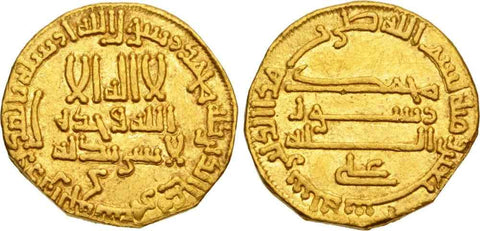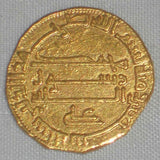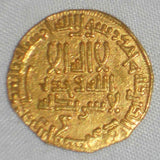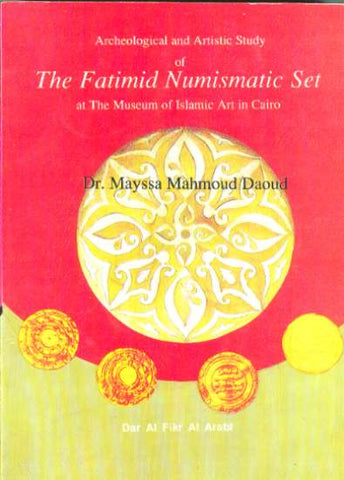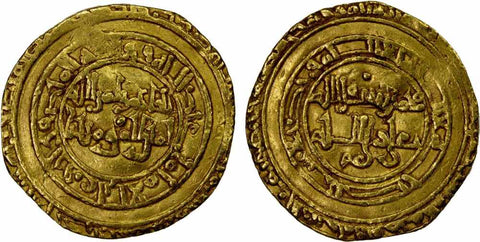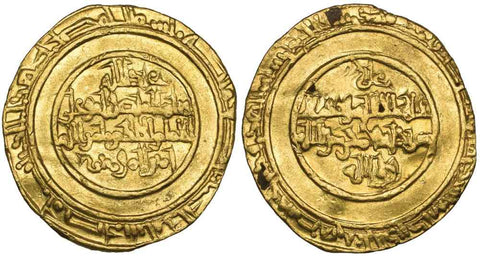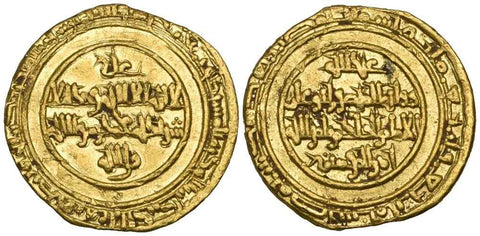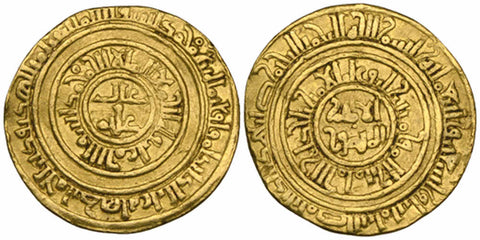786 Cairo Egypt Islamic Coin Abbasid Gold Dinar Harun Al-Rashid 170H Citing Aly
Description: Gold dinar from Al-Rashid, who ruled the Muslim empire in the period 170-193 AH (786 - 809 AD). Al-Rashid is the fifth caliph of the Abbasid dynasty. His full name being Abu-Ja'far Harun al-Rashid. This coin cites Aly the governor of Egypt at the time (Aly ibn Suleyman, was Governor of Egypt in 170-171 AH). This coin, is believed to be the first purely Islamic coin minted in Egypt. Earlier Islamic gold dinars were minted mainly in Dimishq and other places to a lesser extent but not in Egypt. A definite quality coin. Please carefully review the scans presented as they are part and parcel of our description.
Date: 170 AH or 786 AD.
Mint: Although the mint is not shown on the coin, it is known to have been minted in Misr (Fustat on the outskirts of Cairo the current capital of Egypt).
Note: As is the norm with these coins, it does not show where it was minted and it is anonymous and does not indicate the name of the ruler. Instead, the coin has religious inscriptions and indication that Mohammed is God's messenger. It also has the word "Aly" under the obverse, indicating that it was struck in Egypt.
Size and weight: This is a dinar, weighs 4.0 grams and is 18.5 mm in diameter.
References: It is Album #218.6 with a rarity index of "S", it is listed in Al Ush's as 1076. The coin is listed in Lane Poole's Catalog of the Khedivial Collection as numbers 398-399.
Condition: I would grade this coin as a good very fine or better. The coin itself is much better than the scan shows with very well defined and legible calligraphy. The planchet of the coin may have been slightly clipped, but other than that, this is a great looking quality coin worthy of a spot in your collection. Please see scans for additional condition information.
Historic Perspective: Abbasid is an Arabic ruling dynasty, originally based in Madinat al-Salam (current day Baghdad) that expanded the Muslim empire and lasted from 750 Ad to 1258 AD. It was named for al-Abbas (566?-652), paternal uncle of the prophet Muhammad. During the first century of the Abbasid rule the empire experienced a time of unprecedented cultural, artistic and economic development, particularly during the reigns of Harun al-Rashid (786-809) and his son al-Mamun (813-833).<p>Al-Rashid, the fifth of the 37 caliphs of that dynasty reigned for 23 years. Under al-Rashid's rule, Baghdad became "a Paris of the ninth century,†with an ever-growing population, merchants, eunuchs, physicians, philosophers, poets, storytellers, mathematicians, in short, all sorts of people. In addition, al-Rashid built schools, libraries, hospitals, and supported the translation of many Greek and Latin texts into Arabic. Harun al'Rashid reportedly encouraged literature and learning and brought learned men from all parts of the empire to Baghdad. Al-Rashid also corresponded with Charlemagne and even sent him a clock and an elephant. Yet despite the advances promoted by al-Rashid, historians never mention his cold and despotic rule. For the slightest reason, he could (and did) have anyone he wished executed and even kept an executioner with a drawn sword by his throne at all times! His own viziers provide an unhappy example of al'Rashid's absolute power. He is assumed to be the king described in the fabled stories of One Thousand and One Nights.
Although Harun al'Rashid ruled during the Golden Age of Arabia, after and indeed during his rule the empire began to disintegrate, despite the advances he had promoted in medicine and education. Actually, this disintegration resulted from the decadent lifestyle led by the caliph, his court, and many of his subjects as well as the corruption among the governors he appointed to rule provinces of the Arab empire. Decadence found in daily life included polygamy and the taking of concubines in addition to slavery and harsh treatment of subordinates.

